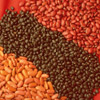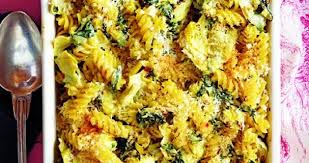Cholesterol Many Could Use More Fiber
 Jason Ashley Wright
Jason Ashley Wright
Fiber's not typically the most fun thing to talk about when it comes to food. But it's easier than you think to introduce fiber to your family's diets.
As the average American diet has depended more and more on more processed, refined foods, fiber consumption has decreased. So people probably don't get enough fiber on a daily basis, said Stephanie Harris, a registered and licensed dietitian with Hillcrest.
When boosting fiber in your kids' meals, "try to make it a positive experience," she said. Use it as an opportunity to explain why fiber is important to be healthy.
Fiber aids in digestion and the prevention of some diseases, Harris explained. It can also lower cholesterol.
We need two types: soluble and insoluble. Soluble fiber, which includes things like oat bran, beans, green peas, potatoes with skin and high-fiber cereals, absorbs water in your system and slows down digestion, making you feel fuller longer.
Insoluble fiber doesn't absorb water and promotes the natural flow of your system. Examples include brown rice, whole grain pastas, fruits and vegetables.
The best way to introduce more fiber to your children is to lead by example, Harris said. If they see you eating it, they'll be more inclined to do the same themselves.
By the way, when boosting fiber intake, be sure to drink at least eight cups of water each day, she said.
Breakfast, snacks For breakfasts, choose 100 percent whole grain cereals, making sure each serving has 3 to 5 grams of fiber, Harris said.
If you have trouble getting your kid to try a higher-fiber cereal, try mixing one into his or her favorite cereal. Gradually over time, you can increase the amount of high-fiber cereal and lower the amount of the favorite.
You can also add cereal to yogurt or, if your kids like smoothies, add a little flaxseed to the mix.
Top your cereal with cut-up fruit or berries with seeds to boost fiber, such as raspberries, which are high in fiber, Harris said. Instead of fruit juices, opt for whole fruits.
Popcorn makes a great, healthy snack -- just avoid the regular-buttered, heavily salted varieties, Harris said.
You can also have your kids help make their own trail mix -- dried fruits, nuts, seeds and a high-fiber cereal. Or skewer fruits and veggies on a stick and make kabobs.
Lunch, dinner Instead of a regular peanut butter and jelly sandwich, switch the jelly out for fresh fruit, Harris said. Or sprinkle nuts on it, perhaps even flaxseed.
For bread, use 100 percent whole grain. Turn the package over to make sure that "whole grain" is the first ingredient on the list. While you're looking, make sure there are at least three grams of fiber in each bread slice.
Incorporate more fresh fruits and veggies in your kids' school lunches, Harris said. Add a dipping sauce -- yogurt, low-fat salad dressing or hummus -- if that helps them eat fruits and vegetables more easily.
At dinner, use brown rice instead of white. If kids balk, try mixing the two at first, then slowly phase out the white rice for brown or whole grain, Harris said. Or add peas to the rice.
For sides, serve a green salad or other vegetables with skins still on them, said Harris, who also suggested beans and legumes.
You can also make a chili packed with a variety of beans. If you use canned beans, Harris recommended rinsing them first to reduce the sodium. High-fiber foods Women need between 21 and 25 grams of fiber a day, and men need 30-38, according to the Mayo Clinic's web site.
Here is a list of foods you can work into your diet to boost fiber intake:
Split peas -- 1 cup, cooked, is 16.3 grams of fiber
Lentils -- 1 cup, cooked, 15.6 grams
Black beans -- 1 cup, cooked, 15 grams
Lima beans -- 1 cup, cooked, 13.2 grams
Baked beans (vegetarian) -- 1 cup, canned, cooked, 10.4 grams
Artichoke -- 1 medium, cooked, 10.3 grams
Green peas -- 1 cup, cooked, 8.8 grams
Raspberries -- 1 cup, 8 grams
Spaghetti, whole-wheat -- 1 cup, cooked, 6.3 grams
Barley, pearled -- 1 cup, cooked, 6 grams
Pear, with skin -- 1 medium, 5.5 grams
Bran flakes -- 3/4 cup, 5.3 grams
Oat bran muffin -- 1 medium, 5.2 grams
Broccoli, boiled -- 1 cup, 5.1 grams
Turnip greens, boiled -- 1 cup, 5 grams
For more, tulsaworld.com/mayofiber High-fiber recipes Here are three recipes that incorporate high-fiber foods.
BARLEY AND LENTIL SOUP WITH SWISS CHARD


1 tablespoon olive oil
1 1/2 cups onion, chopped
1 1/2 cups carrots, peeled and chopped
3 large garlic cloves, minced
2 1/2 teaspoons ground cumin
10 cups low-salt chicken or vegetable broth
2/3 cup pearl barley
1 (14 1/2-ounce) can diced tomatoes in juice
2/3 cup dried lentils
4 cups (packed) coarsely chopped Swiss chard (about 1/2 large bunch)
2 tablespoons fresh dill, chopped
1. Heat oil in heavy large nonreactive pot over medium-high heat. Add onions and carrots; saute until onions are golden brown, about 10 minutes. Add garlic and stir 1 minute. Mix in cumin; stir 30 seconds. Add 10 cups broth and barley; bring to boil. Reduce heat; partially cover and simmer 25 minutes. Stir in tomatoes with juice and lentils; cover and simmer until barley and lentils are tender, about 30 minutes.
2. Add chard to soup; cover and simmer until chard is tender, about 5 minutes. Stir in dill. Season soup with salt and pepper. Thin with more broth, if desired.
- Bon Appetit, February 2005
BLUEBERRY-BANANA OAT BRAN MUFFINS


1 1/2 cups all purpose flour
1/2 cup sugar
1/4 cup oat bran
2 teaspoons baking powder
1/2 teaspoon salt
1 cup mashed ripe bananas (about 3)
1/2 cup unflavored soy milk
1 large egg
2 tablespoons vegetable oil
2 teaspoons fresh lemon juice
1 1/2 cups fresh blueberries or 1 1/2 cups frozen blueberries, unthawed (6 to 7 ounces)
1. Preheat oven to 400°F. Line 12 muffin cups with paper liners. Combine flour, sugar, oat bran, baking powder, and salt in medium bowl; whisk to blend.
2. Place mashed bananas in large bowl. Stir in soy milk, egg, oil, and lemon juice. Mix in dry ingredients, then blueberries. Divide batter among muffin papers. Bake muffins until tester inserted into center comes out clean, about 20 minutes. Turn muffins out onto rack and cool 10 minutes. Serve warm or at room temperature.
- Bon Appetit, August 2005
SPINACH AND ARTICHOKE BAKED WHOLE GRAIN PASTA


2 (10-ounce) boxes frozen spinach
Salt
1 pound whole wheat or whole grain penne pasta or macaroni (any short cut pasta)
2 tablespoons extra-virgin olive oil
1 large shallot, chopped
4 cloves garlic, finely chopped or grated
1 (10-ounce) box frozen artichoke hearts, defrosted, halved, pat dry
1/2 cup dry white wine
4 tablespoons butter
3 slightly rounded tablespoons flour
2 cups milk
Freshly ground black pepper
Freshly grated nutmeg
5 ounces Gruyere cheese, shredded (about 1 1/2 cups)
1 cup shredded Parmigiano-Reggiano cheese
1. Position the oven rack in center of the oven. Preheat the oven to 375 degrees F.
2. Defrost the spinach in the microwave. Drain, then dry the spinach out as much as possible by wringing it out in a clean kitchen towel.
3. Bring a saucepot of water to a boil. Add salt. Add the pasta and cook according to package directions for al dente.
4. Meanwhile, heat 2 tablespoons extra-virgin olive oil in a small skillet over medium to medium-high heat and add the shallots and garlic and cook 2 to 3 minutes. Add the artichokes and cook until they are lightly brown. Add the wine to deglaze the pan.
5. While the artichokes and pasta cook, in a saucepot over medium to medium-high heat, add the butter. When melted, whisk in the flour for 1 minute or so, then whisk in the milk and season with salt, pepper and a little nutmeg. Cook 5 to 6 minutes, or until thick enough to coat the back of a spoon, adjust the seasonings and stir in the Gruyere cheese. Combine the sauce with the spinach, pasta, and artichoke and stir until just combined. Transfer the mixture to a baking dish and cover with the remaining cheese. Cool and store for a make-ahead meal.
6. Bake on a baking sheet 45 minutes or until brown and bubbly on top.
 Jason Ashley Wright
Jason Ashley WrightFiber's not typically the most fun thing to talk about when it comes to food. But it's easier than you think to introduce fiber to your family's diets.
As the average American diet has depended more and more on more processed, refined foods, fiber consumption has decreased. So people probably don't get enough fiber on a daily basis, said Stephanie Harris, a registered and licensed dietitian with Hillcrest.
When boosting fiber in your kids' meals, "try to make it a positive experience," she said. Use it as an opportunity to explain why fiber is important to be healthy.
Fiber aids in digestion and the prevention of some diseases, Harris explained. It can also lower cholesterol.
We need two types: soluble and insoluble. Soluble fiber, which includes things like oat bran, beans, green peas, potatoes with skin and high-fiber cereals, absorbs water in your system and slows down digestion, making you feel fuller longer.
Insoluble fiber doesn't absorb water and promotes the natural flow of your system. Examples include brown rice, whole grain pastas, fruits and vegetables.
The best way to introduce more fiber to your children is to lead by example, Harris said. If they see you eating it, they'll be more inclined to do the same themselves.
By the way, when boosting fiber intake, be sure to drink at least eight cups of water each day, she said.
Breakfast, snacks For breakfasts, choose 100 percent whole grain cereals, making sure each serving has 3 to 5 grams of fiber, Harris said.
If you have trouble getting your kid to try a higher-fiber cereal, try mixing one into his or her favorite cereal. Gradually over time, you can increase the amount of high-fiber cereal and lower the amount of the favorite.
You can also add cereal to yogurt or, if your kids like smoothies, add a little flaxseed to the mix.
Top your cereal with cut-up fruit or berries with seeds to boost fiber, such as raspberries, which are high in fiber, Harris said. Instead of fruit juices, opt for whole fruits.
Popcorn makes a great, healthy snack -- just avoid the regular-buttered, heavily salted varieties, Harris said.
You can also have your kids help make their own trail mix -- dried fruits, nuts, seeds and a high-fiber cereal. Or skewer fruits and veggies on a stick and make kabobs.
Lunch, dinner Instead of a regular peanut butter and jelly sandwich, switch the jelly out for fresh fruit, Harris said. Or sprinkle nuts on it, perhaps even flaxseed.
For bread, use 100 percent whole grain. Turn the package over to make sure that "whole grain" is the first ingredient on the list. While you're looking, make sure there are at least three grams of fiber in each bread slice.
Incorporate more fresh fruits and veggies in your kids' school lunches, Harris said. Add a dipping sauce -- yogurt, low-fat salad dressing or hummus -- if that helps them eat fruits and vegetables more easily.
At dinner, use brown rice instead of white. If kids balk, try mixing the two at first, then slowly phase out the white rice for brown or whole grain, Harris said. Or add peas to the rice.
For sides, serve a green salad or other vegetables with skins still on them, said Harris, who also suggested beans and legumes.
You can also make a chili packed with a variety of beans. If you use canned beans, Harris recommended rinsing them first to reduce the sodium. High-fiber foods Women need between 21 and 25 grams of fiber a day, and men need 30-38, according to the Mayo Clinic's web site.
Here is a list of foods you can work into your diet to boost fiber intake:
Split peas -- 1 cup, cooked, is 16.3 grams of fiber
Lentils -- 1 cup, cooked, 15.6 grams
Black beans -- 1 cup, cooked, 15 grams
Lima beans -- 1 cup, cooked, 13.2 grams
Baked beans (vegetarian) -- 1 cup, canned, cooked, 10.4 grams
Artichoke -- 1 medium, cooked, 10.3 grams
Green peas -- 1 cup, cooked, 8.8 grams
Raspberries -- 1 cup, 8 grams
Spaghetti, whole-wheat -- 1 cup, cooked, 6.3 grams
Barley, pearled -- 1 cup, cooked, 6 grams
Pear, with skin -- 1 medium, 5.5 grams
Bran flakes -- 3/4 cup, 5.3 grams
Oat bran muffin -- 1 medium, 5.2 grams
Broccoli, boiled -- 1 cup, 5.1 grams
Turnip greens, boiled -- 1 cup, 5 grams
For more, tulsaworld.com/mayofiber High-fiber recipes Here are three recipes that incorporate high-fiber foods.
BARLEY AND LENTIL SOUP WITH SWISS CHARD
1 tablespoon olive oil
1 1/2 cups onion, chopped
1 1/2 cups carrots, peeled and chopped
3 large garlic cloves, minced
2 1/2 teaspoons ground cumin
10 cups low-salt chicken or vegetable broth
2/3 cup pearl barley
1 (14 1/2-ounce) can diced tomatoes in juice
2/3 cup dried lentils
4 cups (packed) coarsely chopped Swiss chard (about 1/2 large bunch)
2 tablespoons fresh dill, chopped
1. Heat oil in heavy large nonreactive pot over medium-high heat. Add onions and carrots; saute until onions are golden brown, about 10 minutes. Add garlic and stir 1 minute. Mix in cumin; stir 30 seconds. Add 10 cups broth and barley; bring to boil. Reduce heat; partially cover and simmer 25 minutes. Stir in tomatoes with juice and lentils; cover and simmer until barley and lentils are tender, about 30 minutes.
2. Add chard to soup; cover and simmer until chard is tender, about 5 minutes. Stir in dill. Season soup with salt and pepper. Thin with more broth, if desired.
- Bon Appetit, February 2005
BLUEBERRY-BANANA OAT BRAN MUFFINS
1 1/2 cups all purpose flour
1/2 cup sugar
1/4 cup oat bran
2 teaspoons baking powder
1/2 teaspoon salt
1 cup mashed ripe bananas (about 3)
1/2 cup unflavored soy milk
1 large egg
2 tablespoons vegetable oil
2 teaspoons fresh lemon juice
1 1/2 cups fresh blueberries or 1 1/2 cups frozen blueberries, unthawed (6 to 7 ounces)
1. Preheat oven to 400°F. Line 12 muffin cups with paper liners. Combine flour, sugar, oat bran, baking powder, and salt in medium bowl; whisk to blend.
2. Place mashed bananas in large bowl. Stir in soy milk, egg, oil, and lemon juice. Mix in dry ingredients, then blueberries. Divide batter among muffin papers. Bake muffins until tester inserted into center comes out clean, about 20 minutes. Turn muffins out onto rack and cool 10 minutes. Serve warm or at room temperature.
- Bon Appetit, August 2005
SPINACH AND ARTICHOKE BAKED WHOLE GRAIN PASTA
2 (10-ounce) boxes frozen spinach
Salt
1 pound whole wheat or whole grain penne pasta or macaroni (any short cut pasta)
2 tablespoons extra-virgin olive oil
1 large shallot, chopped
4 cloves garlic, finely chopped or grated
1 (10-ounce) box frozen artichoke hearts, defrosted, halved, pat dry
1/2 cup dry white wine
4 tablespoons butter
3 slightly rounded tablespoons flour
2 cups milk
Freshly ground black pepper
Freshly grated nutmeg
5 ounces Gruyere cheese, shredded (about 1 1/2 cups)
1 cup shredded Parmigiano-Reggiano cheese
1. Position the oven rack in center of the oven. Preheat the oven to 375 degrees F.
2. Defrost the spinach in the microwave. Drain, then dry the spinach out as much as possible by wringing it out in a clean kitchen towel.
3. Bring a saucepot of water to a boil. Add salt. Add the pasta and cook according to package directions for al dente.
4. Meanwhile, heat 2 tablespoons extra-virgin olive oil in a small skillet over medium to medium-high heat and add the shallots and garlic and cook 2 to 3 minutes. Add the artichokes and cook until they are lightly brown. Add the wine to deglaze the pan.
5. While the artichokes and pasta cook, in a saucepot over medium to medium-high heat, add the butter. When melted, whisk in the flour for 1 minute or so, then whisk in the milk and season with salt, pepper and a little nutmeg. Cook 5 to 6 minutes, or until thick enough to coat the back of a spoon, adjust the seasonings and stir in the Gruyere cheese. Combine the sauce with the spinach, pasta, and artichoke and stir until just combined. Transfer the mixture to a baking dish and cover with the remaining cheese. Cool and store for a make-ahead meal.
6. Bake on a baking sheet 45 minutes or until brown and bubbly on top.









